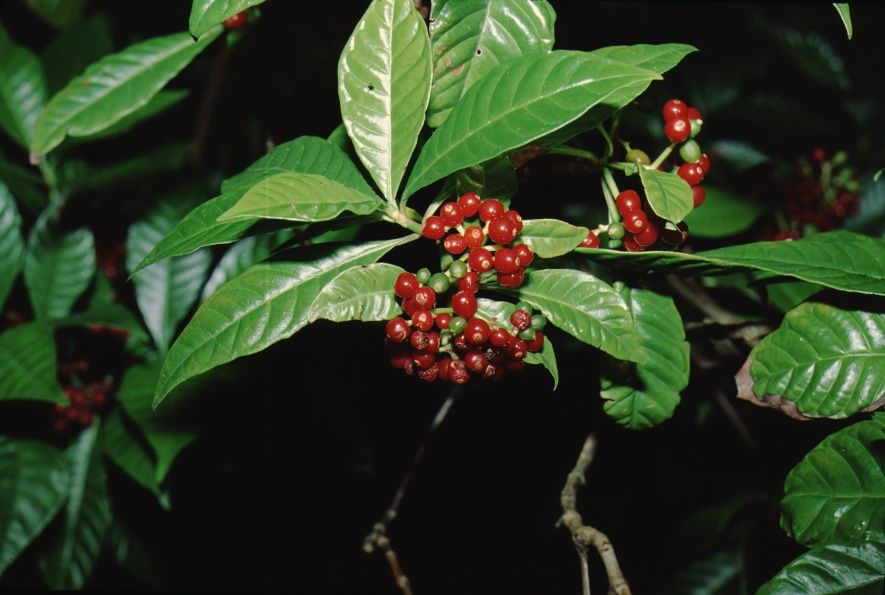Introduction
Psychotria nervosa is a Florida native shrub that gets its common name from the small, red, ellipsoid fruit it produces. Fruit resembles the true coffee bean. The leaves of this plant are generally 6 inches long and are narrowly obovate in shape. These glossy green leaves are puckered with impressed veins on the upper surfaces of the leaf blades, and there is pubescence along the veins on the leaf undersides. The shiny, dark green foliage gives a rich texture to any landscape. The small, white inflorescence occurs terminally on the branchlets during the warm months of the year. Each flower is a sessile or stalked, open, short cyme.

Credit: Edward F. Gilman, UF/IFAS

Credit: Edward F. Gilman, UF/IFAS

Credit: Edward F. Gilman, UF/IFAS
General Information
Scientific name: Psychotria nervosa
Pronunciation: sye-koe-TREE-yuh ner-VOE-suh
Common name(s): wild coffee, Seminole balsamo
Family: Rubiaceae
Plant type: shrub
USDA hardiness zones: 10B through 11 (Figure 4)
Planting month for zone 10 and 11: year-round
Origin: native to Florida
Invasive potential: not known to be invasive
Uses: specimen; hedge; espalier; foundation; border; mass planting
Availability: generally available in many areas within its hardiness range

Credit:
Description
Height: 4 to 10 feet
Spread: 4 to 8 feet
Plant habit: round
Plant density: moderate
Growth rate: moderate
Texture: medium
Foliage
Leaf arrangement: opposite/subopposite
Leaf type: simple
Leaf margin: entire
Leaf shape: elliptic (oval)
Leaf venation: pinnate
Leaf type and persistence: evergreen
Leaf blade length: 4 to 8 inches
Leaf color: green
Fall color: no fall color change
Fall characteristic: not showy
Flower
Flower color: white
Flower characteristic: spring flowering; summer flowering
Fruit
Fruit shape: oval
Fruit length: less than 0.5 inch
Fruit cover: fleshy
Fruit color: red
Fruit characteristic: attracts birds
Trunk and Branches
Trunk/bark/branches: typically multi-trunked or clumping stems; not particularly showy
Current year stem/twig color: green
Current year stem/twig thickness: medium
Culture
Light requirement: plant grows in part shade/part sun; plant grows in the shade
Soil tolerances: acidic; alkaline; sand; loam; clay
Drought tolerance: moderate
Soil salt tolerances: poor
Plant spacing: 36 to 60 inches
Other
Roots: usually not a problem
Winter interest: no special winter interest
Outstanding plant: not particularly outstanding
Pest resistance: no serious pests are normally seen on the plant
Use and Management
This 4 to 10 foot tall plant may be used in the landscape as a specimen or foundation plant and is very effective when planted in mass. It stays relatively small in the sun and takes to clipping quite nicely. It makes a nice base or background plant for a shrub border. Birds and other wildlife are often associated with this plant for the fruit it produces.
Wild coffee is a moderately drought tolerant plant that will perform well in a partial shade or full shade location in the landscape. Plants in the full sun often have chlorotic foliage. A plant in the full shade can grow into a small tree with an open canopy. It is very cold tender and should be protected if grown north of hardiness zone 10b. This plant will grow on any well-drained soil.
Pests and Diseases
No pests or diseases are of major concern.